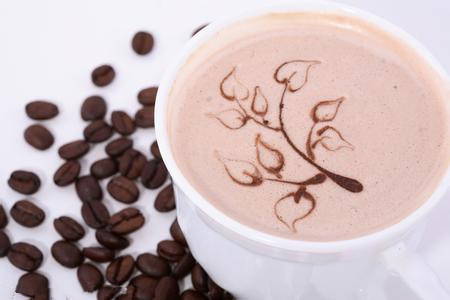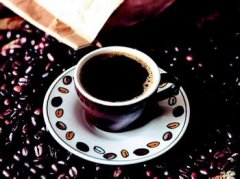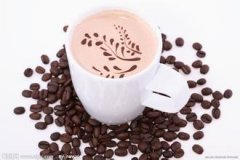The six largest coffee brewing methods in the world basic knowledge of coffee

one. Trickling filter: the structure of this trickling filter pot is very simple, only a conical container, much like a cup, the inner edge of the container must be covered with filter paper, put in coffee powder, soak in hot water. This method makes the hot water connect with the coffee powder once, and then fall into the cup, so it will only extract the substances that play a higher level, so you can brew the coffee with the least flavor and fragrance.
two. American electric coffee maker: there are two kinds of internal containers of the general electric coffee maker, one is funnel type, the other is wide and flat cylindrical shape. I suggest using the former when cooking curry in small quantities. Coffee powder is concentrated at the narrow bottom, slowing down the flow of hot water, while in the latter, coffee powder can only be laid flat on the bottom of the box, a thin layer, when the hot water quickly passes through. There was no coffee. At present, most of the internal nozzles of hungry electric coffee machines in the world spray hot water around, but the amount of coffee powder is so small that part of the hot water can only be sprayed to the filter paper, but not to the coffee powder. So most of them are brewed into a cup of diluted coffee!
three. French filter press (my favorite) I think the filter press can best show the original flavor and wild, its operation principle, directly brew coffee with hot water, and filter with iron mesh, almost extract all the substances that can be extracted, so it will form a cup of turbid coffee. And the flavor is very primitive and complicated. General high-quality coffee is very suitable for this brewing method. But shoddy coffee beans have no flavor at all. All that remains is bitterness.
four. Siphon pot: many people think that the coffee grounds left in the pot have to be shaped into a hill to be considered a successful brewing. However, I do not think this statement is necessarily correct. Because in the middle of the upper pot is the position of the filter cloth, it is actually very simple to form a hill as long as the siphon pot leaves the fire, that is, the upper pot of coffee is ready to stay in the lower pot, just stir it a few times clockwise with a coffee stirring stick, of course, in the opposite direction! In fact, the siphon pot uses the air pressure of a water pipe to move the water in the lower half of the container to the upper half of the container to become a cup of coffee. So it is also called vacuum pot and plug air pot. Basically, siphon pots are not used in Europe and the United States, but they are very popular in Japan, Taiwan and the mainland. maybe we are dancing with glassware on the bar, like doing chemical experiments, making people think that this is a very esoteric skill. I think this way of brewing coffee is the best.
five. Mocha pot: the mocha pot is composed of the upper pot, the filter screen and the lower pot, which is between the upper and lower pots. When brewing, the water is placed in the lower pot and the coffee is placed in the middle of the net. when the pot is heated, it produces steam and rushes the hot water up. Pass through the coffee powder, then into the pot to form coffee. Because its air pressure is relatively high, some people classify it as high-pressure cooking. Some people call it hand-made espresso, but it can't make the foam of espresso. But it's really exciting coffee.
six. Italian espresso machine: Espresso is an easy to use technology to brew coffee, a cup of Espresso standard, coffee powder in about 7 grams, water temperature of about 95 degrees, water pressure in about 10 atmospheric pressure, brewing time between 22-28 seconds. If the water temperature is too low, it will cause insufficient extraction and can only boil a cup of Espresso with insufficient flavor and sour taste. However, the excessive temperature of the water will cause excessive bitterness and astringency in the coffee. And the mellow taste mainly comes from its water pressure, the general hot water rinse robe method, can only hold coffee in water substances, and can use high pressure to extract coffee can not hold water substances. These high pressures completely emulsify the lipids in the coffee and enter the water. Its brewing time will determine the characteristics of this cup of coffee. Espresso uses high pressure to extract the flavor of the coffee, which is completed in about 25 seconds. The coffee that flowed out after the timeout was no longer tasteless. It will only dilute Espresso. I've tried to keep it out of the water after the timeout, a full cup. It tastes like charcoal.
Important Notice :
前街咖啡 FrontStreet Coffee has moved to new addredd:
FrontStreet Coffee Address: 315,Donghua East Road,GuangZhou
Tel:020 38364473
- Prev

Eight factors of coffee common sense affecting coffee taste
There are eight main factors affecting coffee: (1) the temperature of the extracted water, (2) the degree of grinding, (3) the extraction pressure, (4) the amount of powder, (5) the degree of extrusion, (6) water quality, (7) machinery and equipment, (8) human temperature: why temperature is listed as the first focus of discussion. Because other factors are better solved and there are coffee bean quality, different varieties are different. But for the average machine, the temperature
- Next

A comprehensive knowledge of coffee
Latte coffee is a classic blend of Italian espresso and milk. Italians also like lattes as breakfast drinks. In the Italian kitchen in the morning, coffee and milk are usually brewed on the sunlit stove. Italians who drink lattes like milk rather than espresso, and only espresso
Related
- Beginners will see the "Coffee pull flower" guide!
- What is the difference between ice blog purified milk and ordinary milk coffee?
- Why is the Philippines the largest producer of crops in Liberia?
- For coffee extraction, should the fine powder be retained?
- How does extracted espresso fill pressed powder? How much strength does it take to press the powder?
- How to make jasmine cold extract coffee? Is the jasmine + latte good?
- Will this little toy really make the coffee taste better? How does Lily Drip affect coffee extraction?
- Will the action of slapping the filter cup also affect coffee extraction?
- What's the difference between powder-to-water ratio and powder-to-liquid ratio?
- What is the Ethiopian local species? What does it have to do with Heirloom native species?

